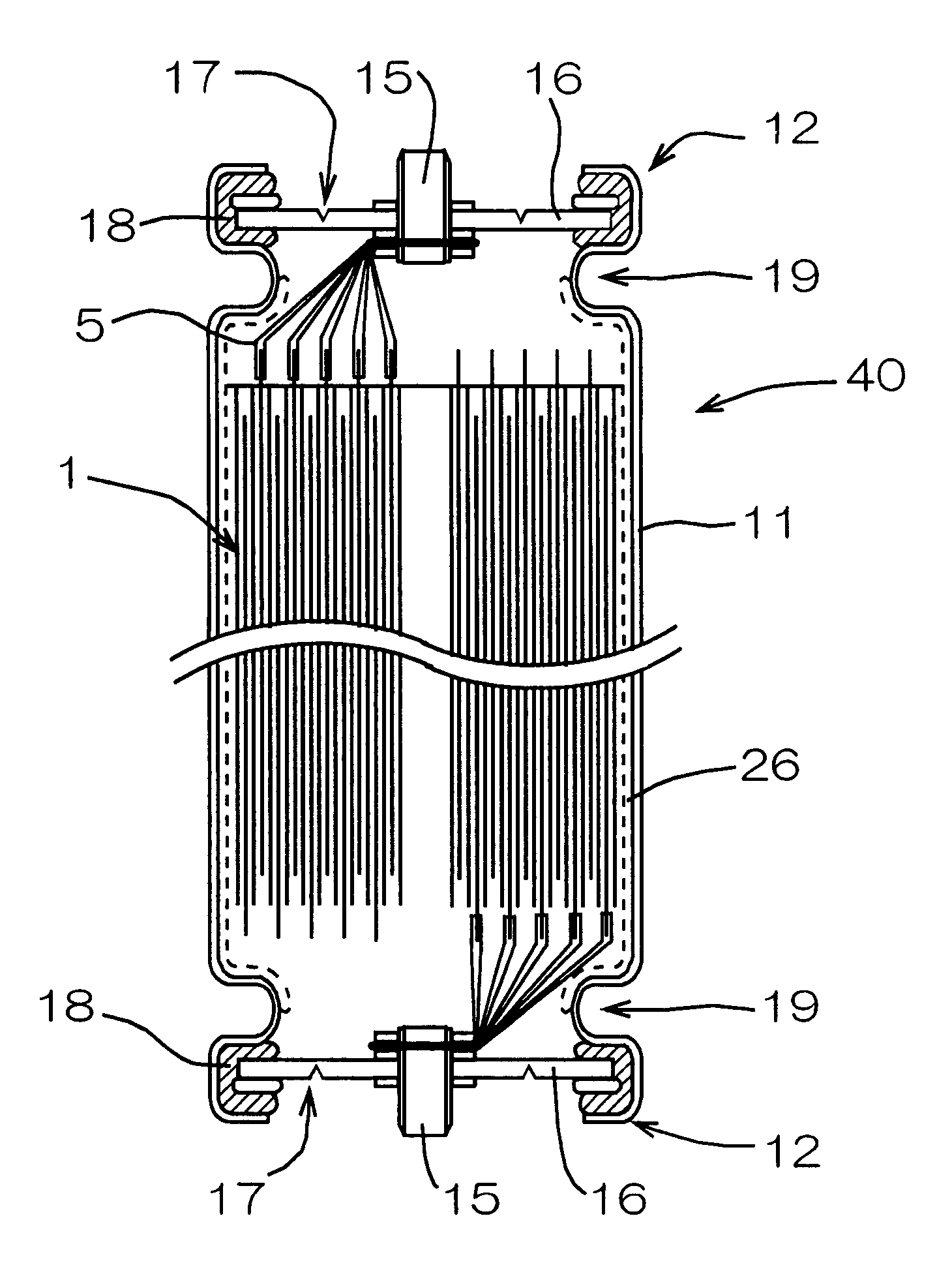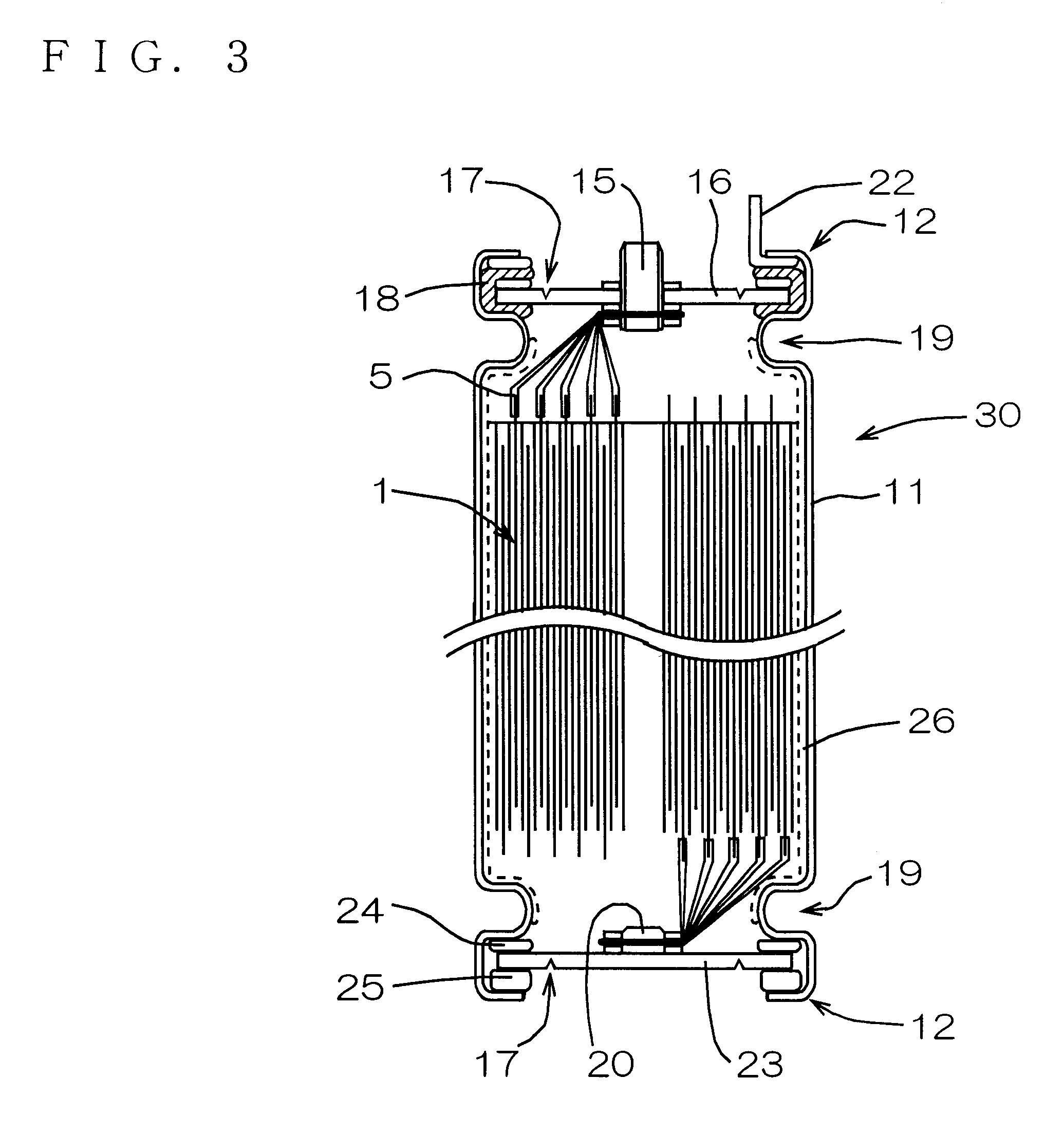Lithium secondary battery
a secondary battery and lithium technology, applied in the direction of wound/folded electrode electrodes, cell components, sustainable manufacturing/processing, etc., can solve the problems of high cost, difficult connection to the case with a plurality of current collecting tabs which have been connected, and difficult to produce a cas
- Summary
- Abstract
- Description
- Claims
- Application Information
AI Technical Summary
Problems solved by technology
Method used
Image
Examples
Embodiment Construction
An internal electrode body of a lithium secondary battery of the present invention (hereinafter referred to as "battery") comprises a positive electrode, a negative electrode and a separator made of porous polymer film, the positive electrode and the negative electrode being wound for configuration so that the positive electrode and negative electrode are not brought into direct contact with each other via the separator. In particular, as shown in FIG. 1, an internal electrode body 1 is formed by winding a positive electrode 2 and a negative electrode 3 via a separator 4, and tabs 5 are provided respectively for each of the positive and negative electrodes 2, 3 (hereinafter referred to as "electrodes 2, 3"). These tabs 5 can be attached to the electrodes 2, 3 by means such as supersonic welding, etc. at the time when the electrodes 2, 3 are wound together with the separator 4. Incidentally, each tab 5's end part of the opposite side having been connected to the electrodes 2, 3 is at...
PUM
| Property | Measurement | Unit |
|---|---|---|
| temperature | aaaaa | aaaaa |
| battery capacity | aaaaa | aaaaa |
| circumference | aaaaa | aaaaa |
Abstract
Description
Claims
Application Information
 Login to View More
Login to View More - R&D
- Intellectual Property
- Life Sciences
- Materials
- Tech Scout
- Unparalleled Data Quality
- Higher Quality Content
- 60% Fewer Hallucinations
Browse by: Latest US Patents, China's latest patents, Technical Efficacy Thesaurus, Application Domain, Technology Topic, Popular Technical Reports.
© 2025 PatSnap. All rights reserved.Legal|Privacy policy|Modern Slavery Act Transparency Statement|Sitemap|About US| Contact US: help@patsnap.com



